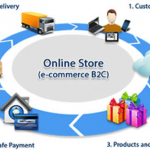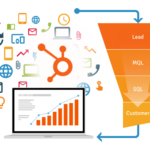Taking Banking To The Next Level: How SaaS Revolutionize The Financial Industry
SaaS (Software as a Service) concept is now embraced everywhere. Different companies have adopted this technology to manage their operations and move the firm to the next level. Many organizations, both big and small are finding it easier to subscribe to SaaS solutions rather than deploying in-house software solutions into their systems. The main reasons as to why there is a massive shift towards SaaS the efficiency and economic sense that the technology offers. There is no need of investing in other complex equipment or employing experienced computer programmers to manage the system.
As compared to other companies and corporates, banks and other financial institutions have been quite slow in incorporating SaaS into their management systems. The reluctance by some banks to adopt to SaaS has seen them operate like fully-fledged software companies. They hire full-time software developers, user interface designers, data administrators, security analysts and even software testers. While putting more focus on the software aspect of the business, they tend to forget their main business goals. This habit can end up effective their business negatively especially when it comes to delivering the best financial services to their customers.
The economic sense of SaaS
Just like any other business, the aim of most of the banks is to make more profit. One way of ensuring that they get high-profit margins is by minimizing the operation cost. Banks don’t want to spend huge sums of their money purchasing software or paying developers to develop software from scratch. By using SaaS, banks will be on the right track. The cost of owning a SaaS is quite lower than other modes of software ownership. The cost-effectiveness of the system is further compounded by the fact that the bank will only be required to access a virtual data room which was created by the SaaS vendor.
SaaS is more effective
One of the things that concern many banks when it comes to the matters relating to software is the effectiveness of the system. Will the system deliver what it is supposed to do? How long will it take before the software can be put into use? What are the maintenance costs among many other queries with these questions in mind, most of the banks will tread carefully on the matters relating to software installation. A bank that decides to use SaaS will have fewer issues to worry about. In SaaS, there is no need for procurement, installation, testing, repair and maintenance services. The software will be ready for use once you subscribe to the vendor. The SaaS vendor takes all the issues regarding the system’s performance care.
Constant evolution
Unlike most of the in-house banking applications, SaaS applications undergo a constant evolution. The vendors always put more effort to release the latest version of the software so as to be compliant with the most recent changes in technology. The brighter side of the story is that customers will not be charged anything for the latest changes that the vendor makes. This means that as a bank, you will be able to enjoy the latest features that the vendor has introduced without paying any extra amount of money. Most of the upgrades made are done to enhance the security of the application and its usability.
Implementing rapid changes using the conventional software development cycles can take years and sometimes the banks may opt to ignore the changes. This can pose a significant risk to the data that has been stored. Hackers might have gathered in-depth information about the current system and can easily exploit its weaknesses to penetrate into the systems.
Scalability
SaaS solutions give room for scalability. Most of the SaaS applications are developed from the scratch and later on they can be redesigned to meet the needs of the growing number of bank customers.
Cloud computing
It is no doubt that SaaS applications ride on the cloud computing technology. This has improved the accessibility since different people can gain access from anywhere in the world as long as they have been permitted to so. This technology can be used to improve the overall operation of the banking systems whereby customers can access their data wherever they are. Through a proper utilization of data rooms which are a technology within cloud computing, banks will be able to work hand in hand with their customers to provide high-quality services.











![20 Apps to Reach Your Goals [Infographic]](https://technofaq.org/wp-content/uploads/2018/05/pandasecurity-tracking-apps-to-help-reach-your-goals-150x150.png)





